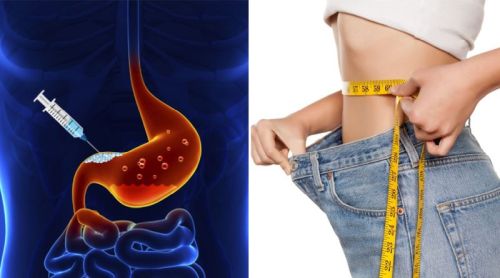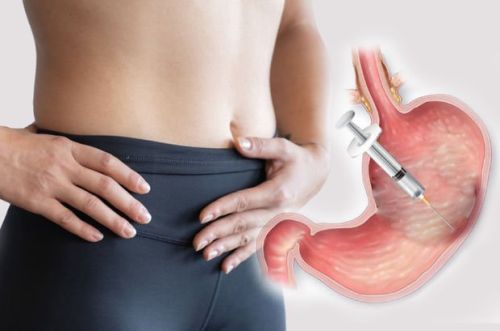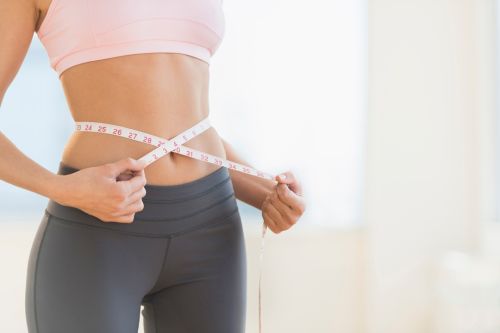A minimally invasive method used in the treatment of obesity. In this procedure, botulinum toxin is injected into the stomach. This toxin relaxes the stomach muscles and reduces appetite. Thus, patients eat less and lose weight. Stomach Botox usually takes 30 minutes and does not require hospitalization. Side effects are generally mild and may include temporary nausea or discomfort. The application should be supported by a healthy diet.
In Which Cases is Stomach Botox Performed?
 It is preferred for those who have difficulty losing weight with diet and exercise. It is suitable for those with a body mass index between 27-35 who do not consider surgical intervention. It is performed to help reduce appetite. It is preferred for people who are not suitable for surgical intervention. It can be considered as an alternative to other weight loss methods.
It is preferred for those who have difficulty losing weight with diet and exercise. It is suitable for those with a body mass index between 27-35 who do not consider surgical intervention. It is performed to help reduce appetite. It is preferred for people who are not suitable for surgical intervention. It can be considered as an alternative to other weight loss methods.
How is Stomach Botox Performed?
 Before stomach botox, the patient usually fasts for at least 8 hours. During the procedure, light sedation is usually applied. This way, the patient does not feel any pain or discomfort during the procedure. It is performed with the help of endoscopy. An endoscope is sent to the stomach through the mouth. Botulinum toxin is injected into specific areas of the stomach via the endoscope. It is usually performed in the fundus region of the stomach and in parts called the antrum. The muscles in these areas are affected, slowing down their contractions. The stomach botox procedure usually takes about 20-30 minutes. After the procedure, the patient is observed for a few hours and is usually discharged on the same day. After the procedure, the stomach emptying time slows down, increasing the feeling of fullness. The person feels the need to eat less, thus helping with weight loss. However, its effects may vary from person to person and are usually effective for 4-6 months. Stomach botox is not a surgical procedure and is considered a minimally invasive procedure. It is a method used to support the weight loss process. It is usually applied together with diet and lifestyle changes.
Before stomach botox, the patient usually fasts for at least 8 hours. During the procedure, light sedation is usually applied. This way, the patient does not feel any pain or discomfort during the procedure. It is performed with the help of endoscopy. An endoscope is sent to the stomach through the mouth. Botulinum toxin is injected into specific areas of the stomach via the endoscope. It is usually performed in the fundus region of the stomach and in parts called the antrum. The muscles in these areas are affected, slowing down their contractions. The stomach botox procedure usually takes about 20-30 minutes. After the procedure, the patient is observed for a few hours and is usually discharged on the same day. After the procedure, the stomach emptying time slows down, increasing the feeling of fullness. The person feels the need to eat less, thus helping with weight loss. However, its effects may vary from person to person and are usually effective for 4-6 months. Stomach botox is not a surgical procedure and is considered a minimally invasive procedure. It is a method used to support the weight loss process. It is usually applied together with diet and lifestyle changes.
Post-Stomach Botox Care
 You should not eat or drink anything for the first few hours after the procedure. Pay attention to the duration recommended by your doctor. Usually, a liquid diet is recommended for the first 24 hours. Then, transition to soft foods should be made. It is recommended to wait about 3-5 days before returning to solid foods. Avoid high-calorie, fatty, and sugary foods. Low-calorie and nutritious foods should be preferred. Drinking plenty of water is important after stomach botox. However, you should not drink water all at once, but sip slowly and in small amounts. Avoid carbonated drinks and caffeinated beverages, as they may cause discomfort in your stomach. Low-intensity activities like light walks can be performed. However, you should avoid heavy exercises for a few days after the procedure. Adopting a more active lifestyle can increase its effect on weight loss. You should regularly use the medications prescribed or recommended by your doctor. Consult your doctor before taking painkillers or other medications, as some drugs may harm the stomach. Stomach botox is generally safe. However, some people may experience side effects such as nausea, vomiting, or bloating. If you experience such symptoms, contact your doctor. Its effects usually last for 4-6 months. During this period, do not miss your doctor’s appointments and continue to monitor your weight loss process. Limit alcohol consumption, as alcohol can irritate the stomach and negatively affect the weight loss process. If you smoke, quitting can improve your health and contribute to weight management. Follow all your doctor’s instructions. This way, you can get the best out of the procedure and maintain a healthy weight loss process.
You should not eat or drink anything for the first few hours after the procedure. Pay attention to the duration recommended by your doctor. Usually, a liquid diet is recommended for the first 24 hours. Then, transition to soft foods should be made. It is recommended to wait about 3-5 days before returning to solid foods. Avoid high-calorie, fatty, and sugary foods. Low-calorie and nutritious foods should be preferred. Drinking plenty of water is important after stomach botox. However, you should not drink water all at once, but sip slowly and in small amounts. Avoid carbonated drinks and caffeinated beverages, as they may cause discomfort in your stomach. Low-intensity activities like light walks can be performed. However, you should avoid heavy exercises for a few days after the procedure. Adopting a more active lifestyle can increase its effect on weight loss. You should regularly use the medications prescribed or recommended by your doctor. Consult your doctor before taking painkillers or other medications, as some drugs may harm the stomach. Stomach botox is generally safe. However, some people may experience side effects such as nausea, vomiting, or bloating. If you experience such symptoms, contact your doctor. Its effects usually last for 4-6 months. During this period, do not miss your doctor’s appointments and continue to monitor your weight loss process. Limit alcohol consumption, as alcohol can irritate the stomach and negatively affect the weight loss process. If you smoke, quitting can improve your health and contribute to weight management. Follow all your doctor’s instructions. This way, you can get the best out of the procedure and maintain a healthy weight loss process.


